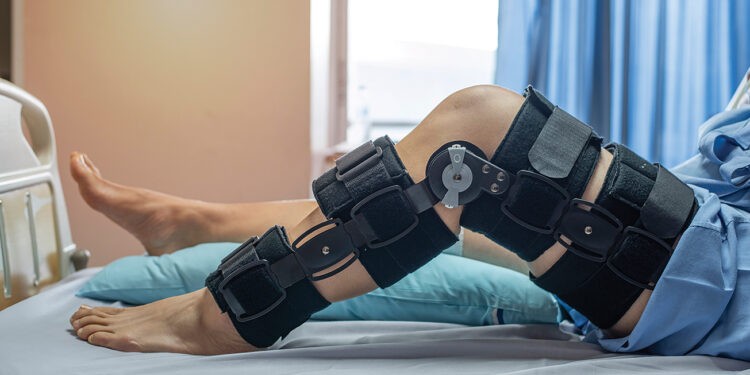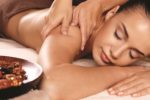ACL Injuries in Women: Understanding the Gender Disparity

Story by Ann E. Butenas
Exploring the unique factors that make women athletes more susceptible to knee ligament tears.
The medical experts at University Health Orthopedics specialize in addressing a diverse array of musculoskeletal issues. From arthritic knees and spinal discomfort to sports-related injuries, their team of professionals is poised to assist you. Each member of the staff is not only highly trained but also brings a wealth of experience to ensure optimal healing. Moreover, many of the hospital’s board-certified physicians boast additional qualifications in areas like orthopaedic trauma, sports medicine, hand surgery, and spine disorders. As a result, patients are provided top-tier, specialized orthopaedic care.
A part of their expertise lies in addressing Anterior Cruciate Ligament (ACL) injuries, one of the most common and debilitating injuries in the realm of sports medicine.
What is the ACL?
The ACL is one of the four main ligaments in the knee. It connects the femur (thigh bone) to the tibia (shin bone) and plays a crucial role in stabilizing the knee joint, particularly during rotational movements. An ACL injury, commonly resulting from sports-related activities, can cause knee instability and may require surgical intervention, especially if the individual wants to continue with sports or active lifestyles.
What is notably striking about this type of injury, however, is the gender disparity when it comes to ACL injuries. Women athletes are known to have a significantly higher risk of experiencing an ACL tear compared to their male counterparts.
But why is this so?
 Christopher Shaw, MD/Sports Medicine Specialist at University Health cares for athletes at all levels. He indicated there is definitely an increased risk of female athletes versus male athletes for ACL injuries for myriad reasons.
Christopher Shaw, MD/Sports Medicine Specialist at University Health cares for athletes at all levels. He indicated there is definitely an increased risk of female athletes versus male athletes for ACL injuries for myriad reasons.
He indicated that, yes, the injuries in women are on the rise due to an increase in females competing in sports, which equates to more hours involved in sports, but one of the main reasons is due to the anatomical differences between men and women.
“The way women’s bodies are designed can put them at an increased risk of ACL injuries,” expressed Dr. Shaw, who also noted that genetics can come in to play and also the way women physiologically move when engaged in sports can put increased stress on the knees.
“It’s the ratio of how their hips and pelvis compared to how their knee is shaped that puts increased load on the ligament,” he explained.
Therefore, it is important to know what to do to prevent such an injury.
“What has proven success in decreasing the risk of ACL injuries in women is neuromuscular coordination training,” said Dr. Shaw. “If they are trained and taught proper technique for landing, for example, that can decrease the risk.”
Dr. Shaw also noted females are fairly quad dominant. In other words, the ratio of the strength of their quadricep muscles to their hamstrings is higher than in men. This is another reason females are more susceptible to ACL injuries, as their hamstrings are weaker.
Often, women have a relative imbalance between the strength of their quadriceps (front thigh muscles) and hamstrings (back thigh muscles). A strong quadricep pull without a balancing hamstring pull can put extra strain on the ACL. Further, the way muscles coordinate and respond to rapid movements can be different between genders. Neuromuscular training programs aimed at improving coordination and response times have been shown to reduce ACL injury rates in women.
According to Dr. Shaw, an ACL is a highly debilitating injury. It can actually be a season-ender for athletes, as such an injury does not always heal the way other injuries do and recovery can take from nine months to a year before the athlete is back at the sport.
“At the high school level, many athletes never return to the level of competition they were at prior to their injury,” stated Dr. Shaw. “For these kids, dreaming of playing at the college level or going pro, and ACL injury can be a life altering injury. It changes their course. Being able to treat – or in the best case prevent – the injure is better than trying to repair it.”
Addressing the Issue
Understanding the unique risk factors for women is crucial in developing preventive strategies. Some approaches that have been implemented or recommended include:
Neuromuscular Training: Programs that emphasize proper techniques for jumping, landing, and pivoting can significantly reduce the risk of ACL injuries in women.
Strength Training: Balancing the strength between various muscle groups, especially the quadriceps and hamstrings, is crucial.
Bracing: While knee braces can’t prevent all injuries, they might offer some support and protection, especially for athletes who have already had an ACL injury.
Educational Programs: Teaching athletes about the risks and prevention strategies can make a significant difference.
Fortunately, many physical therapists and coaches are more and more aware of the research behind ACL injuries in women and how to train the core to decrease and prevent such an event occurring.
As for any warning signs that a young female athlete may be at risk for an ACL injury, Dr. Shaw indicated it can be observed in the way she moves.
“You can do some specific tests on how they jump and land, which can cue you in if someone is at an increased risk and then you can train them to alleviate those factors,” he asserted.
While the gender disparity in ACL injuries is concerning, the good news is that, with proper training and awareness, the risk can be significantly reduced. As research continues to progress, there’s hope that more effective preventive strategies will emerge, further bridging the gap between male and female ACL injury rates.
“You don’t need an ACL to live, but if you want to return to a twisting or pivoting sport at the high school level, the recommendation is to reconstruct the ACL for the ability to compete and to protect the other structures in the knee,” noted Dr. Shaw.
 For more information on Dr. Christopher Shaw’s practice at University Health Orthopaedics,
For more information on Dr. Christopher Shaw’s practice at University Health Orthopaedics,
visit them at 2101 Charlotte, Kansas City, Missouri 64108;
go online at https://www.uhkc.org/orthosports/;
or call 816-307-1336






